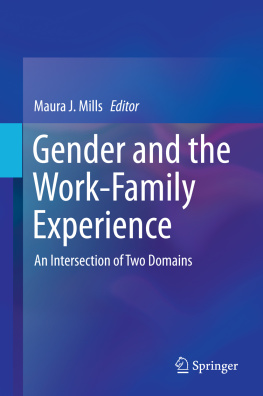Configurations of Family
in Contemporary Japan
The middle-class nuclear family model has long dominated discourses on family in Japan. Yet there have always been multiple configurations of family and kinship, which, in the context of significant socio-economic and demographic shifts since the 1990s, have become increasingly visible in public discourse. This book explores the meanings and practices of family in Japan and brings together research by scholars of literature, gender studies, media and cultural studies, sociology, and anthropology. While the primary focus is the Japanese family, it also examines the experience and practice of family beyond the borders of Japan, in settings such as Brazil, Australia and Bali. The chapters explore key issues such as ageing, single households, non-heterosexual living arrangements and parenting. Moreover, many of the issues addressed, such as the growing diversity of family, the increase in single-person households and the implications of an ageing society, are applicable to other mature, late-industrial societies.
Employing both multi- and inter-disciplinary approaches, this book combines textual analysis of contemporary television, film, literature, manga, anime and other media with empirical and ethnographic studies of families in Japan and in transnational spaces. As such, it will be of great interest to students and scholars working across a number of fields including Japanese culture and society, sociology of family, gender studies, film and media studies, literature and cultural studies, and gerontology.
Tomoko Aoyama is an Associate Professor in Japanese at the University of Queensland, Australia.
Laura Dales is Assistant Professor in Asian Studies at the University of Western Australia.
Romit Dasgupta is Assistant Professor in Asian Studies at the University of Western Australia.
The Nissan Institute/Routledge Japanese Studies Series
Series Editors:
Roger Goodman, Nissan Professor of Modern Japanese Studies, University of Oxford, Fellow, St Antonys College
J.A.A. Stockwin, formerly Nissan Professor of Modern Japanese Studies and former Director of the Nissan Institute of Japanese Studies, University of Oxford, Emeritus Fellow, St Antonys College
Other titles in the series:
The Myth of Japanese Uniqueness
Peter Dale
The Emperors Adviser
Saionji Kinmochi and pre-war Japanese politics
Lesley Connors
A History of Japanese Economic Thought
Tessa Morris-Suzuki
The Establishment of the Japanese Constitutional System
Junji Banno, translated by J.A.A. Stockwin
Industrial Relations in Japan
The peripheral workforce
Norma Chalmers
Banking Policy in Japan
American efforts at reform during the Occupation
William M. Tsutsui
Educational Reform in Japan
Leonard Schoppa
How the Japanese Learn to Work
Second edition
Ronald P. Dore and Mari Sako
Japanese Economic Development
Theory and practice Second edition
Penelope Francks
Japan and Protection
The growth of protectionist sentiment and the Japanese response
Syed Javed Maswood
The Soil, by Nagatsuka Takashi
A portrait of rural life in Meiji Japan
Translated and with an introduction by Ann Waswo
Biotechnology in Japan
Malcolm Brock
Britains Educational Reform
A comparison with Japan
Michael Howarth
Language and the Modern State
The reform of written Japanese
Nanette Twine
Industrial Harmony in Modern Japan
The intervention of a tradition
W. Dean Kinzley
Japanese Science Fiction
A view of a changing society
Robert Matthew
The Japanese Numbers Game
The use and understanding of numbers in modern Japan
Thomas Crump
Ideology and Practice in Modern Japan
Edited by Roger Goodman and Kirsten Refsing
Technology and Industrial Development in Pre-war Japan
Mitsubishi Nagasaki Shipyard, 18841934
Yukiko Fukasaku
Japans Early Parliaments, 18901905
Structure, issues and trends
Andrew Fraser, R.H.P. Mason and Philip Mitchell
Japans Foreign Aid Challenge
Policy reform and aid leadership
Alan Rix
Emperor Hirohito and Shwa Japan
A political biography
Stephen S. Large
Japan: Beyond the End of History
David Williams
Ceremony and Ritual in Japan
Religious practices in an industrialized society
Edited by Jan van Bremen and D.P. Martinez
The Fantastic in Modern Japanese Literature
The subversion of modernity
Susan J. Napier
Militarization and Demilitarization in Contemporary Japan
Glenn D. Hook
Growing a Japanese Science City
Communication in scientific research
James W. Dearing
Architecture and Authority in Japan
William H. Coaldrake
Womens Giday and the Japanese Theatre Tradition
A. Kimi Coaldrake
Democracy in Post-war Japan
Maruyama Masao and the search for autonomy
Rikki Kersten
Treacherous Women of Imperial Japan
Patriarchal fictions, patricidal fantasies
Hlne Bowen Raddeker
Japanese-German Business Relations
Co-operation and rivalry in the inter-war period
Akira Kud
Japan, Race and Equality
The Racial Equality Proposal of 1919
Naoko Shimazu
Japan, Internationalism and the UN
Ronald Dore
Life in a Japanese Womens College
Learning to be ladylike
Brian J. McVeigh
On The Margins of Japanese Society
Volunteers and the welfare of the urban underclass
Carolyn S. Stevens
The Dynamics of Japans Relations with Africa
South Africa, Tanzania and Nigeria
Kweku Ampiah
The Right to Life in Japan
Noel Williams
The Nature of the Japanese State
Rationality and rituality
Brian J. McVeigh
Society and the State in Inter-war Japan
Edited by Elise K. Tipton
Japanese-Soviet/Russian Relations since 1945
A difficult peace
Kimie Hara
Interpreting History in Sino-Japanese Relations
A case study in political decision making
Caroline Rose
End Shsaku
A literature of reconciliation
Mark B. Williams
Green Politics in Japan
Lam Peng-Er
The Japanese High School
Silence and resistance
Shoko Yoneyama
Engineers in Japan and Britain
Education, training and employment
Kevin McCormick
The Politics of Agriculture in Japan
Aurelia George Mulgan
Opposition Politics in Japan
Strategies under a one-party dominant regime
Stephen Johnson
The Changing Face of Japanese Retail
Working in a chain store
Louella Matsunaga
Japan and East Asian Regionalism
Edited by S Javed Maswood
Globalizing Japan Ethnography of the Japanese presence in America, Asia and Europe
Edited by Harumi Befu and Sylvie Guichard-Anguis




